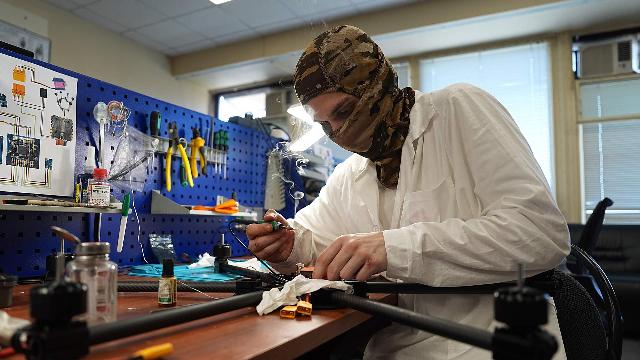The ease of operation and adaptability of the new UAV complexes will help change the situation on the line of combat contact.
Russia is developing a combat system for autonomous operation of UAVs, which will be able to independently maintain the line of combat contact. Such products will make it possible to control a front hundreds of kilometers long without the participation of operators. Reconnaissance UAVs will patrol the territory themselves and summon attack drones when any target is detected, including aerial ones. Until initialization, the drones will be located in special "nests" (hangars). Experts point out that the ease of operation and adaptability of the system will help change the situation on the battlefield.
With the reliability of a Kalashnikov
Attack drones of various types will be placed in special "nests" with the ability to recharge and, if necessary, fly out for reconnaissance and strikes. Moreover, the energy for the operation of the entire system, as well as drone flights, will last for two to three months. The software will make it possible to connect devices from different manufacturers capable of solving various tasks to the system. The kit stored in the "nest" will include a sapper drone, a kamikaze FPV, as well as large tactical bomber UAVs and an interceptor drone for air defense purposes.
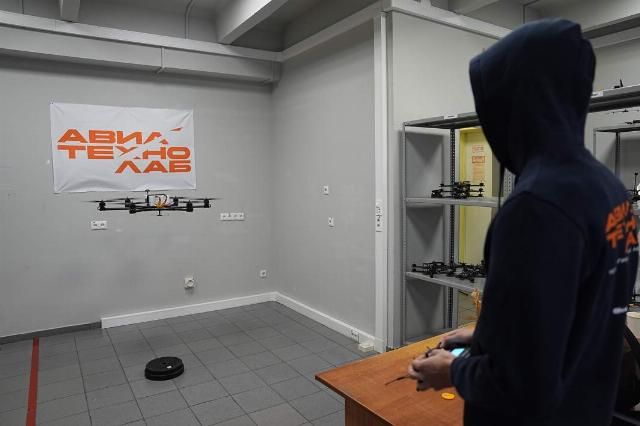
Photo: IZVESTIA/Pavel Volkov
Image source: iz.ru
All the "nests" and equipment are combined into a single decentralized network of devices, which allows the network to become ultra-reliable and independent of the serviceability of individual products in it.
Aviatechnolab's new product is still being developed under the working name "Diction" from the Greek for "network". One such product will allow you to control an area of up to 100 square kilometers without the participation of operators.
According to the developers, the system can be comprehensively tested and put into production within a year. Its distinctive feature is its simplicity and speed of deployment, as well as its relatively cheap cost, the company's employees say.
— The "nests" taken to the front line will be distributed and disguised, — Alexey, an employee of Aviatechnolab, told Izvestia about the principles of the novelty. — The system is capable of being on alert at all times. Surveillance drones will be constantly patrolling the sky, monitoring the situation in the air and on the ground. With the help of technical vision, they identify potential targets.
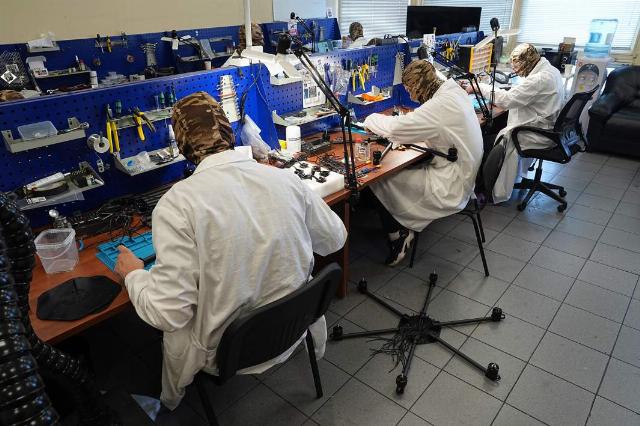
Photo: IZVESTIA/Pavel Volkov
Image Source: iz.ru
Information about the detected equipment or personnel of the enemy is immediately transmitted to the command center, which is located far from the line of contact in a safe place. It remains for the operator in the command center to give the kill command.
"The good thing about the system is that it can do without people," Alexey continues. — That is, drones fly to the target by themselves using video stream analysis and point triangulation, and exchange information through a decentralized network.
For this reason, there is no need for human control of the equipment, which makes the system more secure from electronic warfare.
— Upon detection, the means of destruction is automatically selected: an interceptor drone will fly against the UAV, and a kamikaze FPV will fly against the personnel, - explains Alexey.
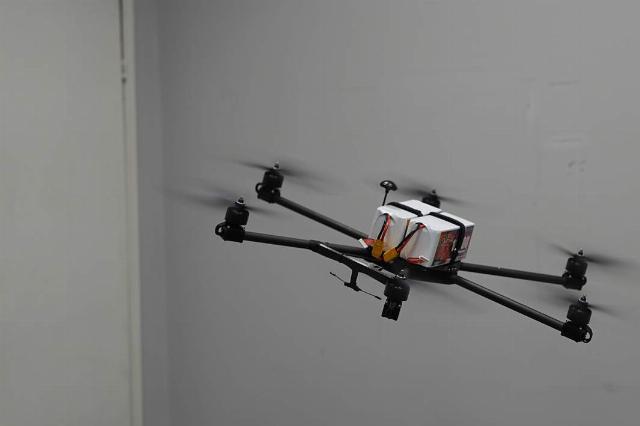
Photo: IZVESTIA/Pavel Volkov
Image source: iz.ru
The enemy, having captured the "nest", will not be able to do anything with it — there are protective mechanisms there that will not allow it to be used, the developers assure.
— The system works in the alarm format, which eliminates threats practically without human intervention, — the specialist emphasizes. — Similar systems exist abroad, but they are more complex, require long training and are designed for very expensive equipment. We will get a simple and cheap system, like a Kalashnikov assault rifle, with a drone cost of 40-50 thousand rubles. A group of fighters can spread their nests within hours and move away from the line of contact, then the system will do all the work for them.
The developers emphasize that they are in close contact with the units on the front line.
—This allows us to understand what is happening, how the situation is changing, what tasks are emerging and what we can change in our developments," they say.
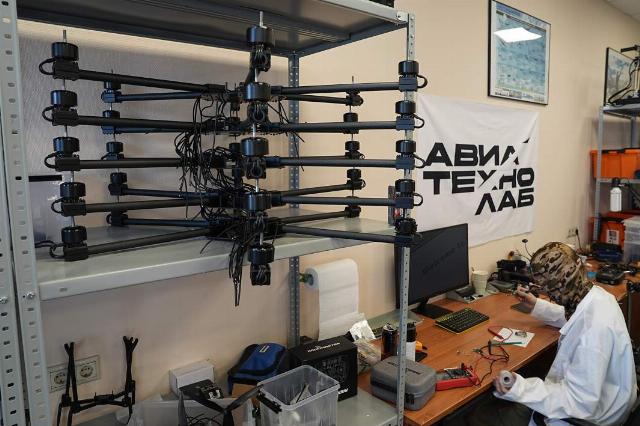
Photo: IZVESTIA/Pavel Volkov
Image source: iz.ru
Such developments can change the tactical pattern of battles, the developers are sure.
— Drones will start fighting, but, of course, the role of command centers, where the information received from drones will be analyzed, will grow many times, — Alexey believes.
The developers are confident that such systems have a good export potential due to their flexibility and low cost. In addition, they will be in demand in civilian life. For example, when patrolling or guarding important facilities and borders.
Autonomous defense
The development of autonomous defense systems is now one of the most promising areas in the military sphere, according to military expert Yuri Lyamin.
"It's not that easy to make it,— he explained. — When developing such systems, it is important to ensure its long, uninterrupted and reliable operation. We need a power supply system, preferably using redundant sources — not only batteries, but also solar panels, for example. Drone shelters must be strong and airtight so that they are not flooded by rain. Reliable communication and management systems are needed. Finally, software is needed — it is what should link all the elements of the system together and make it work as it should.
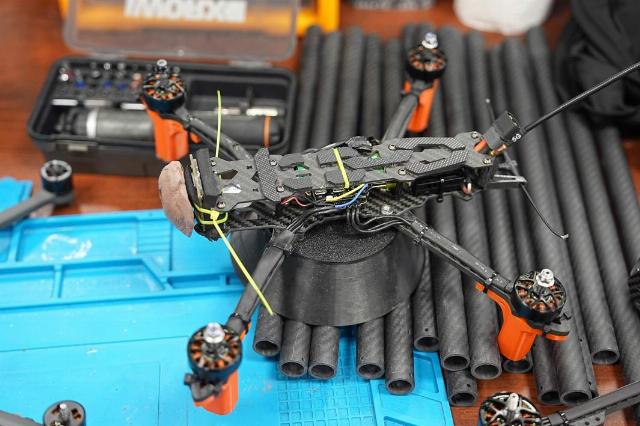
Photo: IZVESTIA/Pavel Volkov
Image source: iz.ru
The idea itself is great, and we should try to bring it to life, military expert Alexei Leonkov told Izvestia.
— Now unmanned systems are actively developing and there are a lot of technical ideas, — he noted. — But only the front can confirm the reliability of any new product. Polygons are good, but the conditions there are ideal. Drones do not shoot down or jam electronic warfare, and they do not try to find and kill operators. It is in combat that the technical and tactical characteristics of combat systems are now being confirmed. Of course, the covert operation of drones will cause great damage to the enemy and help save the lives of soldiers. The ease of operation and adaptability of such systems can affect the situation on the battlefield. But only a baptism of fire will determine her future fate.
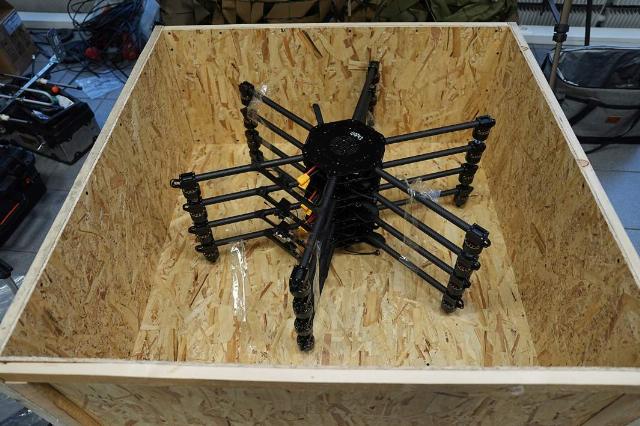
Photo: IZVESTIA/Pavel Volkov
Image source: iz.ru
Such systems are being developed not only in our country, said Yuri Lyamin.
"It is also proposed to introduce ground—based unmanned systems into a single circuit," the expert noted. — It's important for us to be ahead now. The situation obliges.
UAVs for the battlefield
Aviatechnolab has developed and is already supplying troops with a control station and a whole range of drones: a striker, a sapper, an interceptor and a scout. All these products are planned to be used in this system.
Izvestia wrote that the company is already producing the Gorgon engineering hexacopter, which can be equipped with interchangeable video transmitters and radios, a tape reset, mounts for the warhead, rotary cameras with switching from a twilight camera to a thermal imager. The device is capable of carrying up to 10 kg of payload. Such characteristics will allow carrying the TM-62 mine and powerful engineering charges. The Gorgon will be useful in supplying advanced units in particularly hot spots on the front. The range of the drone with the possibility of return is 10 km, the speed reaches 90 km/ h.
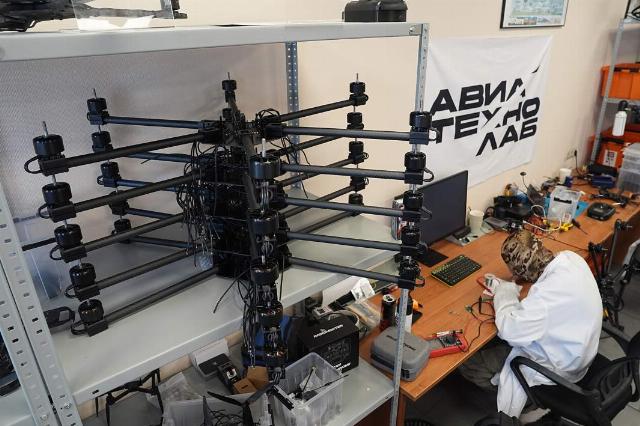
Photo: IZVESTIA/Pavel Volkov
Image source: iz.ru
Such drones have been supplied to Russian military personnel in their combat zone for a long time. Production capacities allow to increase production to hundreds of thousands of products per year.
Bogdan Stepovoy
Andrey Fedorov
